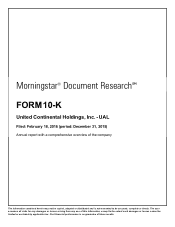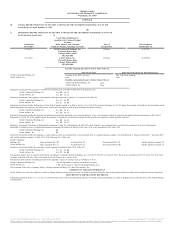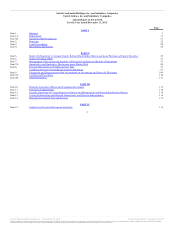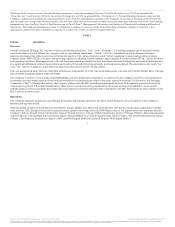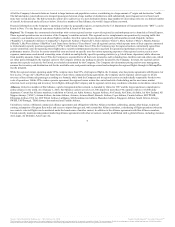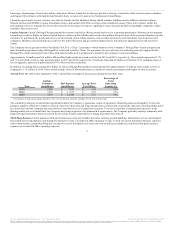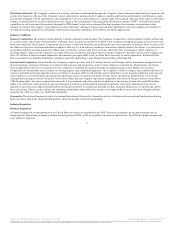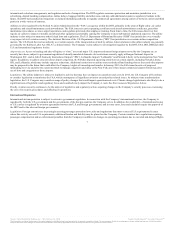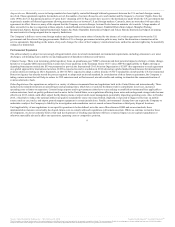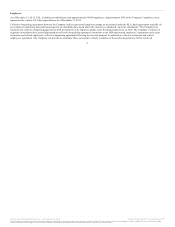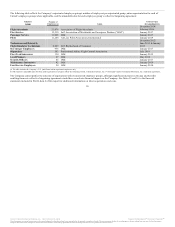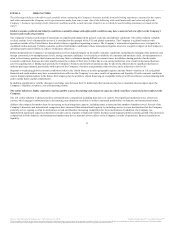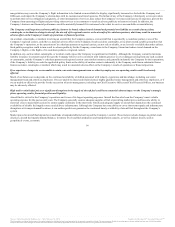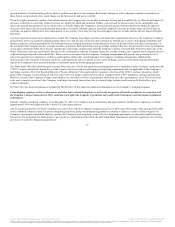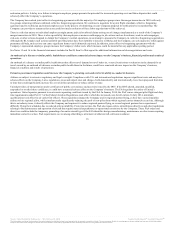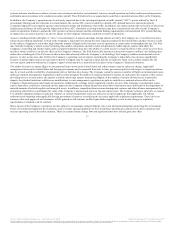United Airlines 2015 Annual Report Download - page 9
Download and view the complete annual report
Please find page 9 of the 2015 United Airlines annual report below. You can navigate through the pages in the report by either clicking on the pages listed below, or by using the keyword search tool below to find specific information within the annual report.
Historically, access to foreign markets has been tightly controlled through bilateral agreements between the U.S. and each foreign country
involved. These agreements regulate the markets served, the number of carriers allowed to serve each market and the frequency of carriers’ flights. Since the
early 1990s, the U.S. has pursued a policy of “open skies” (meaning all U.S.-flag carriers have access to the destination), under which the U.S. government has
negotiated a number of bilateral agreements allowing unrestricted access between U.S. and foreign markets. Currently, there are more than 100 open skies
agreements in effect. However, many of the airports that the Company serves in Europe, Asia and Latin America maintain slot controls. A large number of
these are restrictive due to congestion at these airports. London Heathrow International Airport, Frankfurt Rhein-Main Airport, Shanghai Pudong
International Airport, Beijing Capital International Airport, Sao Paulo Guarulhos International Airport and Tokyo Haneda International Airport are among
the most restrictive foreign airports due to capacity limitations.
The Company’s ability to serve some foreign markets and expand into certain others is limited by the absence of aviation agreements between the U.S.
government and the relevant foreign governments. Shifts in U.S. or foreign government aviation policies may lead to the alteration or termination of air
service agreements. Depending on the nature of any such change, the value of the Company’s international route authorities and slot rights may be materially
enhanced or diminished.
Environmental Regulation
The airline industry is subject to increasingly stringent federal, state, local and international environmental requirements, including emissions to air, water
discharges, safe drinking water, and the use and management of hazardous substances and wastes.
. There is an increasing global regulatory focus on greenhouse gas (“GHG”) emissions and their potential impacts relating to climate change.
Initiatives to regulate GHG emissions from aviation have been underway in the European Union (“EU”) since 2009 but applicability to flights arriving or
departing from airports outside the EU was postponed to provide the International Civil Aviation Organization (“ICAO”) the opportunity to reach agreement
on a global approach for international aviation. ICAO is expected to reach a resolution in 2016 advancing a global market-based measure for international
aviation emissions starting in 2021. Separately, in 2016 ICAO is expected to adopt a carbon dioxide (“CO2”) standard for aircraft and the U.S. Environmental
Protection Agency has already started the process required to adopt such an aircraft standard. In consideration of these future requirements, the Company is
taking various actions that will help to reduce its CO2 emissions such as fleet renewal, aircraft retrofits and seeking to stimulate the commercialization of
aviation alternative fuels.
. Our operations are subject to a variety of other environmental laws and regulations both in the United States and internationally. These
include noise-related restrictions on aircraft types and operating times, which have or could in the future result in curtailments in services, increased
operating costs or limits on expansion. Certain foreign airports and/or governments either have or are seeking to establish environmental fees applicable to
carbon emissions, local air quality pollutants and/or noise. In the United States, new regulations affecting storm water and underground storage tanks became
effective in 2015, which could affect airport fuel hydrant systems or airport storm water management, potentially impacting operating costs. Also, in October
2015, a final rule to reduce the national ambient air quality standards for ozone was issued which, if upheld, is expected to trigger restrictions on mobile
sources such as cars, trucks, and airport ground support equipment incertain jurisdictions. Finally, environmental cleanup laws can require the Company to
undertake or subject the Company to liability for investigation and remediation costs at owned or leased locations or third party disposal locations.
Until applicability of new regulations to our specific operations is better defined, or in the case of the referenced GHG and ozone standards, these
implementation measures are actually developed, future costs to comply with such regulations will remain uncertain. While we continue to monitor these
developments, we do not currently believe that such developments or resulting expenditures will have a material impact on our capital expenditures or
otherwise materially adversely affect our operations, operating costs or competitive position.
8
Source: United Continental Holdings, Inc., 10-K, February 18, 2016 Powered by Morningstar® Document Research℠
The information contained herein may not be copied, adapted or distributed and is not warranted to be accurate, complete or timely. The user assumes all risks for any damages or losses arising from any use of this information,
except to the extent such damages or losses cannot be limited or excluded by applicable law. Past financial performance is no guarantee of future results.

